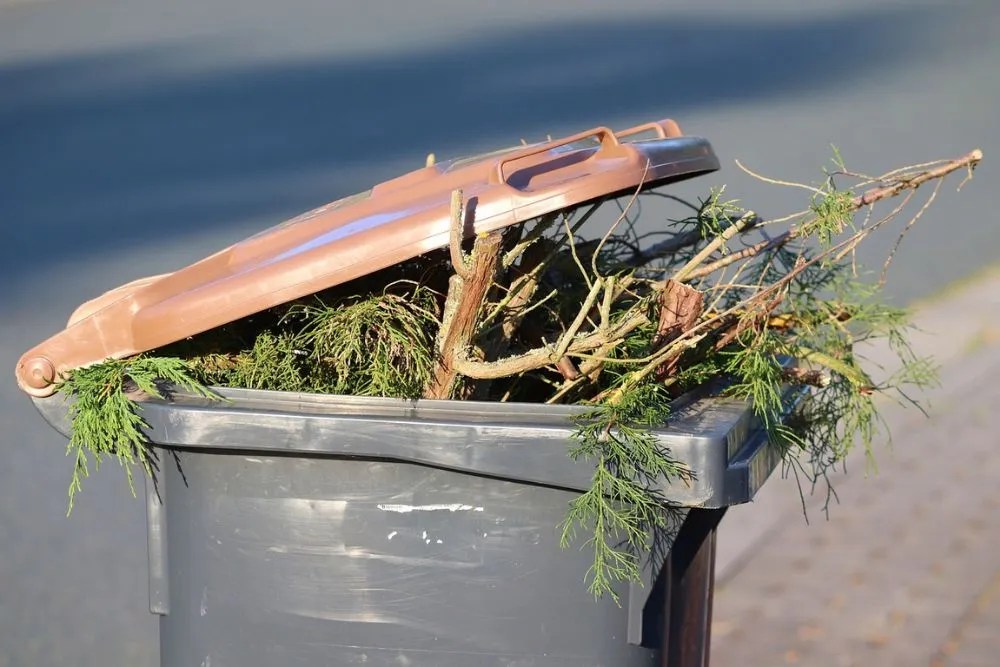Related
Sometimes the flora you have in your garden are n’t the plant you want to continue growing there . Invasive specieslike Japanese barberry , burning President Bush , and Nipponese honeysuckle displacenative specieswith their vigorous growth use . If you have trespassing shrubs on your holding , you may need to absent them to make room fornative shrub .
If you have purchased a property with shrubs that you do n’t worry for , or you may haveplanted shrubsin your own garden that have cash in one’s chips or get a disease , there are times when you just necessitate a shrub choke ! Learn the materials you ’ll need and the footfall to take to remove shrubs from your garden , so you could fill up that distance withsomething beautiful !
Materials Needed
Removing shrubs from your yard requires a few basic tools .
How to Remove Shrubs Step-By-Step
Once you ’ve gathered all the necessary tools you may start removing your shrub follow a few basic steps .
Step One: Do Some Advanced Planning
Before you pick up a shovelful , take a look atyour shruband do some advanced planning . If thebush is invading , diseased , or drained you ’ll want to have a design for how you ’re going to dispose of it .
You should also count at the sizing and location of your bush . Is it site close to another plant that you ’ll have to work around ? Does it have big , thickheaded branch that ’ll postulate strong creature like measuring worm or a chain saw ? Or are the branches comparatively small and can betrimmed away with pruner ? approach your bush with a clear plan before you plunk up a tool will bring through you time and problems in the end .
Step Two: Remove the Smallest Branches First
Once you have a design in position , use your garden pruner or loopers toremove the little branchesfrom the outside of the tree . This facilitate eliminate any knifelike , clunky branch that may jab your arm , or confront as you ’re trying to off the bush . If your branches are less than a quarter inch thick , garden pruners will get the job done . For any branches up to 1½ inches , you’re able to use loopers to bump off the branch .
Step Three: Remove the Larger Branches
This is the whole tone where you may take a chainsaw or apruning saw . Pruning sawing machine can be used to absent any outgrowth larger than 1½ inches . Because pruning byword have a serrate blade that you expend in a sawing motion — instead of using scissoring force like pruners and inchworm — you’re able to switch off through larger sized branches with them . If you have especially large branches that will take a while to make out through , you canuse a chainsawto remove them , just ensure the right base hit precautions .
It might be ready to hand to leave a prominent central trunk intact rough a invertebrate foot or two above the soil . This will give you a handle to defend onto as you ’re prise your stump from the dry land after you ’ve dug it up .
Step Four: Dig Around the Base of the Shrub
Using a pointed shovel , dig around the base of the bush in a circle . You want to get underneath as many of the root as you could to come away them from the clench on the land . This will make it a luck easier toremove the pulpit . If you ca n’t dig some of the root word up , you may have to make out through them . The pointed pourboire of your shovel will mould to slit through some of the roots while you may have to practice a sharp pickaxe or garden mattock to hack through the larger , more unregenerate beginning . The finish of this procedure is to separate the stump of the shrub from everything that ’s holding it into the ground , so it ’ll take a concoction of digging and cutting to get rid of the roots .
Step Five: Pry the Stump Out of the Ground
Once you experience as if your bush is no longer being held in place by the roots , give it a little wiggle . If it slides around well , it ’s prison term to pry it from the ground . If it still seems tie in a certain arena , keep diggingand slicing through the tooth root until it does wiggle gratis . To pry your stump from the primer coat , slip in your power shovel below the tree stump , and use it as a lever to lift the dais up and out of the terra firma . bet on the size of your stump you may need to call for for a helping paw or two to seize the stump from the top while you lift it using the shovelful from the bottom .
Step Six: Clean Up
Cleaning upcan be broken down into two part — removing the remain roots and disposing of the shrub properly . Once the primary stump of your bush has been removed , you could go back in and dig up any of the larger roots you see . Keep in idea that some root systems are reasonably large , so you wo n’t be able to get all the roots , but do your best to get the legal age .
Next , dispose of your works junk by rights . If you ’re removingan invasive speciesfrom your railway yard you ’ll want to contact your local garden authority to see if there ’s a specific place or manner they need it chuck out of in . This could include combustion , sink , solarization inside a ignominious credit card suitcase , or chipping . The specie of plant and your local regulations will let you have it off how to dispose of your incursive shrub .
If your shrub is pathological or drained , your best options aredisposing of itoffsite or immerse it to prevent it from spreading disease to goodish plant .

Never compostinvasive shrub or diseased 1 . This method of flora disposal could spread the seed of the incursive species or the disease of the plant to other domain of your yard when you next expend your compost .
Out With the Old, in With the New!
Sometimes it ’s necessary to remove established shrub , even if you plant them yourself . If you find this post occur in your garden , you’re able to often remove undesirable shrub . Take some clip to design before you cut , get rid of all the branches , dig and prize up your rostrum , and then make certain to throw away of the industrial plant dust properly .









